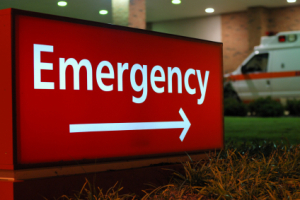by
Brendon Nafziger, DOTmed News Associate Editor | June 28, 2010

A new study examines
the impact of MR in ER
A quick MRI scan of the heart could help doctors determine whether a patient complaining of chest pains is suffering from a life-threatening condition, thereby helping reduce costs associated with care, researchers said.
Performing a cardiac MRI stress test on relatively high-risk patients showing up in the ER with chest pains instead of sending the patient immediately for inpatient care saved hospitals almost $600 per patient, the researchers said.
The findings were published online June 24, and are scheduled to appear in a future edition of Annals of Emergency Medicine.



Ad Statistics
Times Displayed: 46243
Times Visited: 1406 MIT labs, experts in Multi-Vendor component level repair of: MRI Coils, RF amplifiers, Gradient Amplifiers Contrast Media Injectors. System repairs, sub-assembly repairs, component level repairs, refurbish/calibrate. info@mitlabsusa.com/+1 (305) 470-8013
The researchers said millions of patients show up to the hospital complaining of chest ailments while few are actually sick.
"I saw cardiac MRI as a potential solution of a problem of a lot of people getting admitted and undergoing lengthy evaluations, yet only a small portion of those people have disease," lead author Dr. Chadwick D. Miller, an assistant professor of emergency medicine at Wake Forest University Baptist Medical Center, told DOTmed News.
Cardiac MRI scans can help doctors detect lack of blood flow, or ischemia, before problems would be revealed through biomarker tests, Miller said, allowing doctors to better gauge how ill the patient is.
In the study, researchers looked at patients coming to the emergency room who had medium to high risk for serious heart problems, as they were over age 55, had previously suffered a heart attack or showed other coronary risk factors.
Typically, these patients are sent straight away to inpatient rooms, where care can be quite aggressive: according to the researchers, some studies estimate that up to half of these patients receive cardiac catheterization upon admission.
But in the study, conducted at Wake Forest Medical Center, Winston-Salem, N.C. between January 2008 and March 2009, about half of the high-risk patients complaining of chest pains but without other evidence of serious heart problems were randomly assigned to an observation unit, also known as a clinical decision unit. Here, they were tested for biomarkers of heart problems and underwent a stress MRI test, Miller said.
The other half of the patients were sent to inpatient wards, where doctors delivered care as they normally would. In the inpatient wards, the care patterns were usually tests for cardiac markers, echocardiography stress tests and cardiac catheterizations, Miller said.
Using models to estimate differences in costs, the study found that caring for the patients in the MRI group was significantly cheaper, with a median cost of about $2,062 per patient. The inpatient group had a median cost of $2,680 per patient to care for. The researchers estimate the median savings for the MRI group to be around $588.

